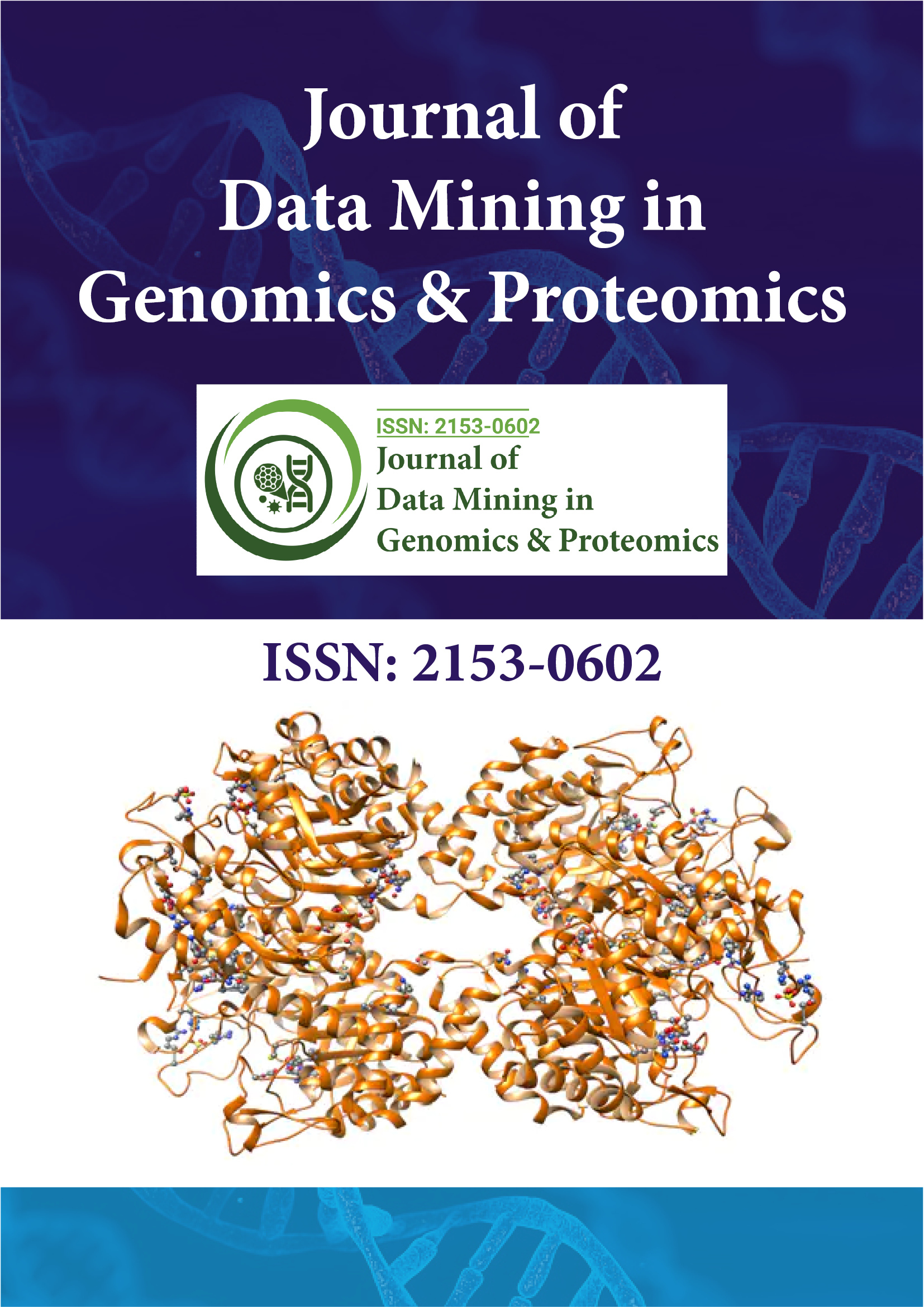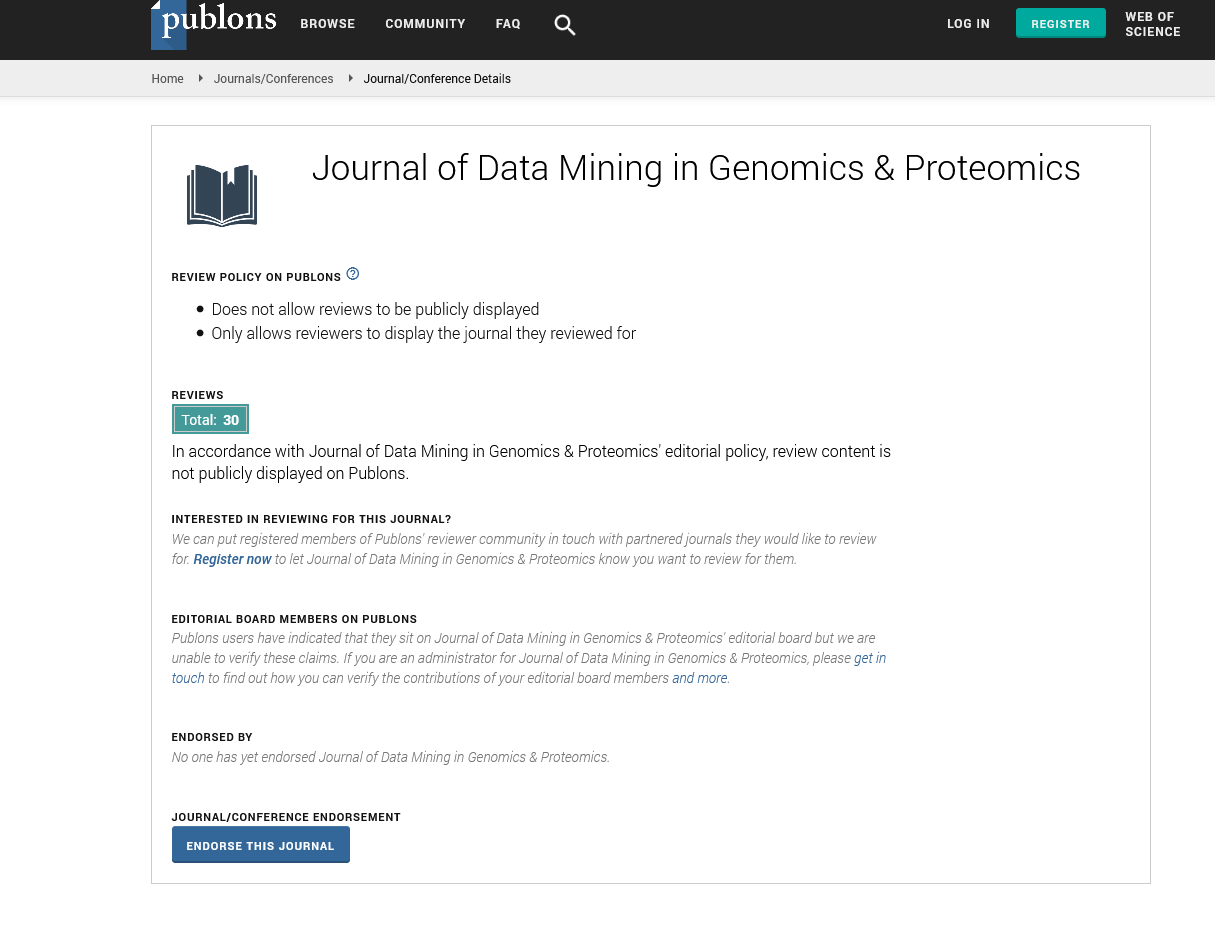Indexed In
- Academic Journals Database
- Open J Gate
- Genamics JournalSeek
- JournalTOCs
- ResearchBible
- Ulrich's Periodicals Directory
- Electronic Journals Library
- RefSeek
- Hamdard University
- EBSCO A-Z
- OCLC- WorldCat
- Scholarsteer
- SWB online catalog
- Virtual Library of Biology (vifabio)
- Publons
- MIAR
- Geneva Foundation for Medical Education and Research
- Euro Pub
- Google Scholar
Useful Links
Share This Page
Journal Flyer

Open Access Journals
- Agri and Aquaculture
- Biochemistry
- Bioinformatics & Systems Biology
- Business & Management
- Chemistry
- Clinical Sciences
- Engineering
- Food & Nutrition
- General Science
- Genetics & Molecular Biology
- Immunology & Microbiology
- Medical Sciences
- Neuroscience & Psychology
- Nursing & Health Care
- Pharmaceutical Sciences
Perspective - (2024) Volume 15, Issue 4
An Overview on Major Affinity Proteomics Methods
Torsten Hubertus*Received: 20-Nov-2024, Manuscript No. JDMGP-24-27976; Editor assigned: 22-Nov-2024, Pre QC No. JDMGP-24-27976 (PQ); Reviewed: 06-Dec-2024, QC No. JDMGP-24-27976; Revised: 13-Dec-2024, Manuscript No. JDMGP-24-27976 (R); Published: 20-Dec-2024, DOI: 10.4172/2153-0602.24.15.364
Description
Affinity proteomics is a potential field of study that focuses on the detection, identification and quantification of proteins based on their specific interactions with affinity reagents, such as antibodies, peptides, or aptamers. By utilizing the specificity of these interactions, affinity proteomics enables researchers to describe the complexity of the proteome, elucidate protein functions and discover biomarkers for diseases. This article provides an overview of the main affinity proteomics methods, highlighting their principles, applications and advantages.
Immunoassays
Immunoassays are among the most widely used methods in affinity proteomics. These techniques rely on antibodies as affinity reagents to specifically bind target proteins. The most common types of immunoassays include Enzyme-Linked Immunosorbent Assay (ELISA), Radioimmunoassay (RIA) and bead-based immunoassays.
ELISA is a strong and sensitive method used to quantify specific proteins in complex samples. It involves immobilizing an antibody on a solid surface, capturing the target protein and detecting it with a secondary antibody conjugated to an enzyme that produces a measurable signal. ELISA is extensively used in clinical diagnostics, such as detecting infectious diseases or monitoring biomarkers for chronic conditions like diabetes and cardiovascular disease.
Bead-based immunoassays utilize beads coated with specific antibodies to capture target proteins. These assays, often implemented using multiplex platforms such as Luminex, allow the simultaneous detection of multiple proteins within a single sample. This multiplexing capability makes bead-based immunoassays particularly valuable for high-throughput studies, including biomarker discovery and profiling immune responses.
Western blotting
Western blotting is a classic and widely used method in affinity proteomics for protein detection and characterization. The technique involves separating proteins by size through gel electrophoresis, transferring them onto a membrane and probing with specific antibodies. Detection is achieved through labeled secondary antibodies that produce chemiluminescent or fluorescent signals.
Western blotting is highly specific and provides information about protein size, post-translational modifications and expression levels. It is extensively used in research to validate findings from other proteomic approaches and to study specific proteins in disease mechanisms or signaling pathways.
Antibody arrays
Antibody arrays are high-throughput platforms that enable the simultaneous analysis of hundreds or even thousands of proteins in a single experiment. These arrays consist of antibodies immobilized on a solid surface, such as glass slides or membranes. When a sample is applied, target proteins bind to their corresponding antibodies and detection is achieved through labeled secondary antibodies or fluorescent tags.
The main advantage of antibody arrays is their ability to provide a comprehensive view of protein expression patterns and interactions. They are particularly useful for biomarker discovery, pathway analysis and studying disease mechanisms. However, the quality of the data depends heavily on the specificity and sensitivity of the antibodies used, which can be a limitation in certain contexts.
Co-Immunoprecipitation (Co-IP)
Co-immunoprecipitation is a method used to study protein protein interactions. It involves using an antibody to capture a target protein along with its interacting partners from a biological sample. The immune complexes are then isolated using beads conjugated to Protein A, Protein G, or specific tags, followed by analysis through techniques like Western blotting or mass spectrometry.
Co-IP is widely used to investigate signaling pathways, protein complexes and molecular interactions in various cellular contexts. However, it requires high-quality antibodies and may produce false positives or negatives due to non-specific binding or the disruption of weak interactions during the process.
Surface Plasmon Resonance (SPR)
Surface plasmon resonance is a label-free method that measures real-time interactions between proteins and their affinity reagents. In SPR, one molecule is immobilized on a sensor chip and its binding interactions with another molecule are monitored based on changes in refractive index near the chip surface.
SPR provides quantitative data on binding kinetics, such as association and dissociation rates, as well as equilibrium constants. This method is invaluable for characterizing protein ligand interactions, validating antibody specificity and developing therapeutic agents. Its main limitation is the need for specialized equipment and expertise.
Aptamer-based methods
Aptamers are synthetic oligonucleotides or peptides that bind to specific proteins with high affinity and specificity. Aptamer-based methods, such as Systematic Evolution of Ligands by Exponential Enrichment (SELEX) and Slow Off-rate Modified Aptamer (SOMAmer) assays, are gaining popularity in affinity proteomics due to their strongness and versatility.
These methods are used for protein quantification, biomarker discovery and studying protein-ligand interactions. Aptamers offer several advantages over antibodies, including greater stability, lower production costs and the ability to target non-immunogenic proteins. However, the generation and optimization of aptamers can be time-consuming.
Proximity Ligation Assay (PLA)
Proximity ligation assay is a sensitive and specific method for detecting protein-protein interactions and post-translational modifications in situ. PLA uses two antibodies conjugated to complementary DNA strands to bind adjacent epitopes on a target protein or interacting proteins. When the antibodies are in close proximity, the DNA strands hybridize and are amplified for detection. PLA is particularly useful for studying protein interactions in their native cellular environment, providing spatial and temporal information. It has applications in cancer research, neurobiology and infectious diseases, among other fields.
Citation: Hubertus T (2024). An Overview on Major Affinity Proteomics Methods. J Data Mining Genomics Proteomics. 15:364.
Copyright: © 2024 Hubertus T. This is an open-access article distributed under the terms of the Creative Commons Attribution License, which permits unrestricted use, distribution, and reproduction in any medium, provided the original author and source are credited.

